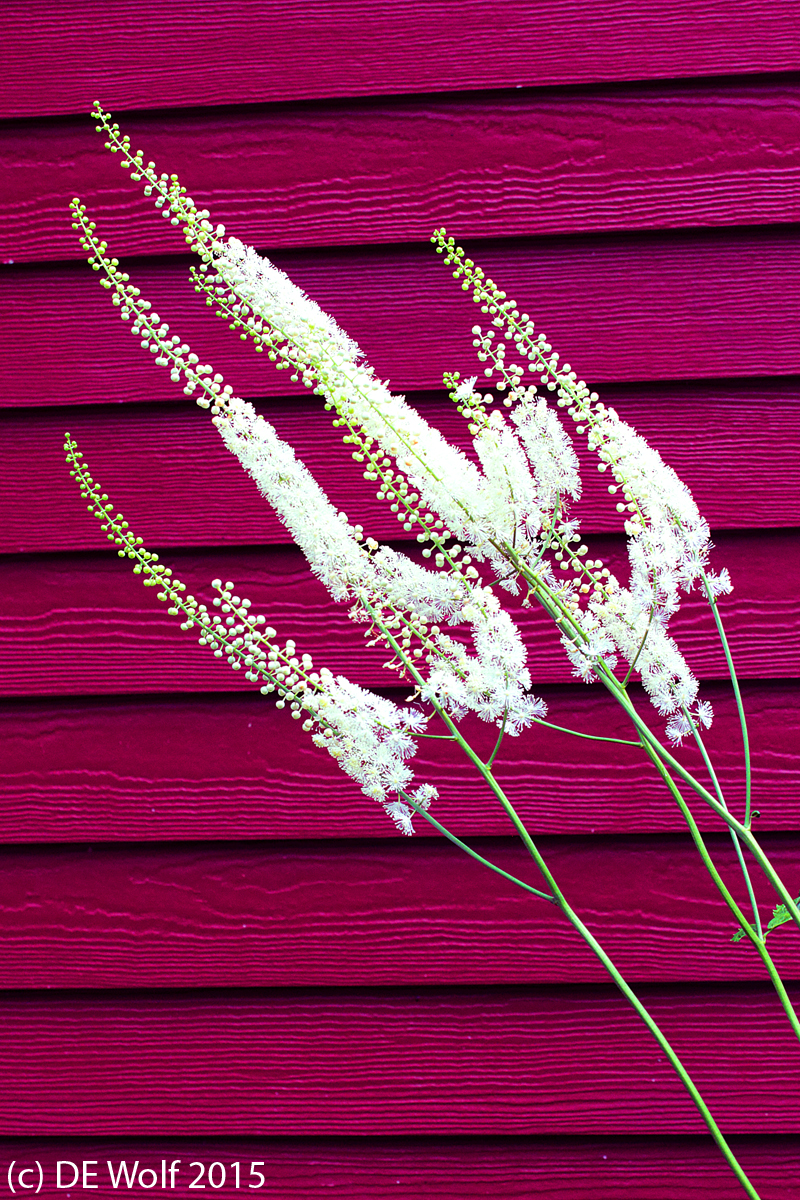OK, so it is the middle of July and time to get out in the woods. My son and I when on a hike Wednesday through the Assabet Valley Wildlife Refuge. Straight off, at the Rangers’ Station I spotted the striking white flower of Figure 1 set off against the siding of the station. It is rare that I photograph flowers, but this was so gorgeous that I made an exception.
I am pretty sure that it is black cohosh (all you botanists out there, please correct me if I am wrong) – Actaea racemosa aslo referred to as black bugbane (the bugs were a bane to me on Wednesday maybe I should have swatted them with one of these stalks), black snakeroot, or fairy candle. It is on the endangered species list.
The roots and rhizomes have long been used medicinally by Native Americans to treat gynecological and other disorders, including sore throats, kidney problems, and depression. Black cohosh is used today mainly as a dietary supplement marketed to women as remedies for the symptoms of premenstrual tension, menopause and other gynecological problems. It was originally thought to contain estrogenic compounds, but this now does not appear to be the case. And I just thought that it was a beautiful white flower. Go figure!
Canon T2i with EF70-200mm f/4L USM lens at 70 mm, ISO 400, Aperture Priority AE mode, 1/160th sec at f/7.1 with no exposure compensation.

